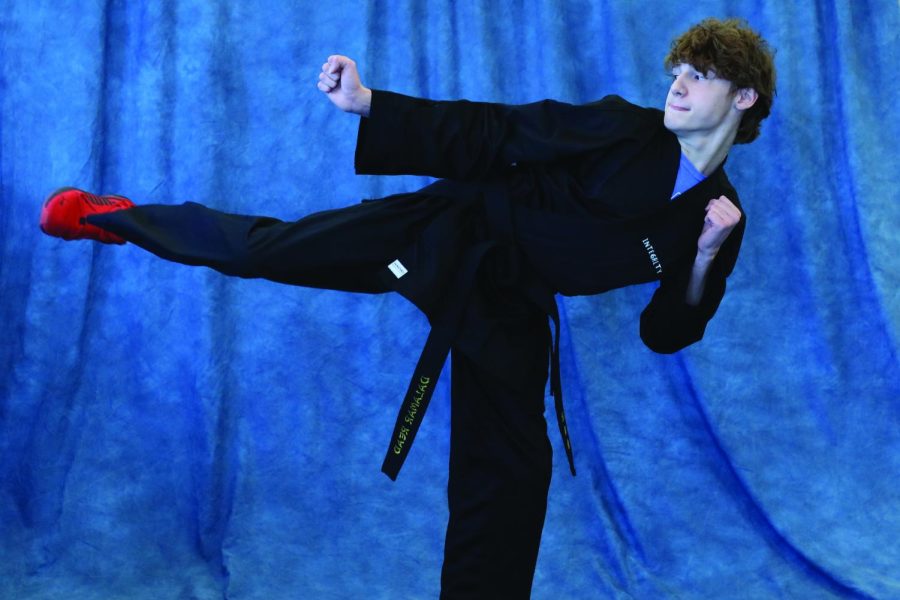Sophomore Dalamar Read’s karate black belt was earned through consistent training and teaching children’s classes
Sophomore learns and teaches karate outside of school
sophomore Dalamar Read earned a black belt through consistent training and teaching children’s karate classes
Q: When did you first start taking karate lessons, why did you start taking them?
Sophomore Dalamar Read: I started when I was five years old to have something to do because I wasn’t currently enrolled in a sport at all.
Q: What level are you at now? What has the process been like?
DR: I’m a black belt at the moment. For the test, I had to write a 20 page paper, break three boards and I had to teach 52 hours.
Q: What do you feel are some of the rewarding aspects of karate?
DR: You learn lots of good character skills and development. It helps with teamwork, all the good stuff.
Q: What are some of the challenges of being involved with karate?
DR: The time management aspect at the moment for me because I’m in cross country and track so I have to skip a cross country practice and make it up on Sundays or Mondays. There’s a time crunch on Saturdays.
Q: How do you feel karate impacts your life?
DR: In one word, beneficially. As a whole throughout my life, I feel like it’s made me more respectful and more of a ‘focused leadership’ sort of individual. I think it’s been a really good choice that I made to stick with it.
Q: What does an average day at karate look like?
DR: I go to class, there’s 30 minutes to prepare. Then you’re teaching five and six year olds for 30 minutes. Next class, you’re teaching the kids that have just graduated out of that class that are up to 10 years old. Then there’s another class that lasts for about 45 minutes. Then there’s my class, which is another hour. It’s basically just conditioning and doing whatever we’re doing that night, which is kicks or sparring, and then go home. I have Chick-fil-a every night afterwards. That’s my light at the end of the tunnel.
Q: What is the teaching process like when you teach kids?
DR: There’s a lesson plan that’s sent out ahead of time so I have a schedule to follow, but it usually goes in the same order. Meditation, warmup and conditioning, whatever the schedule says for that day, and then cooldown.
Q: What is your favorite technique you’ve learned in karate? What is your favorite technique you’ve taught?
DR: My favorite technique is a flying sidekick. My favorite to teach is jump kick or round kick.
Q: What has karate taught you over the years?
DR: In a broad sense, all the character traits that I mentioned previously. There’s also a lot of self defense aspects so I feel like I could handle myself in most situations.
Q: What are your goals/expectations for your future karate career?
DR: Hopefully this summer, I can finish my second black belt paper so I can test for second degree black belt if I break my four boards.
